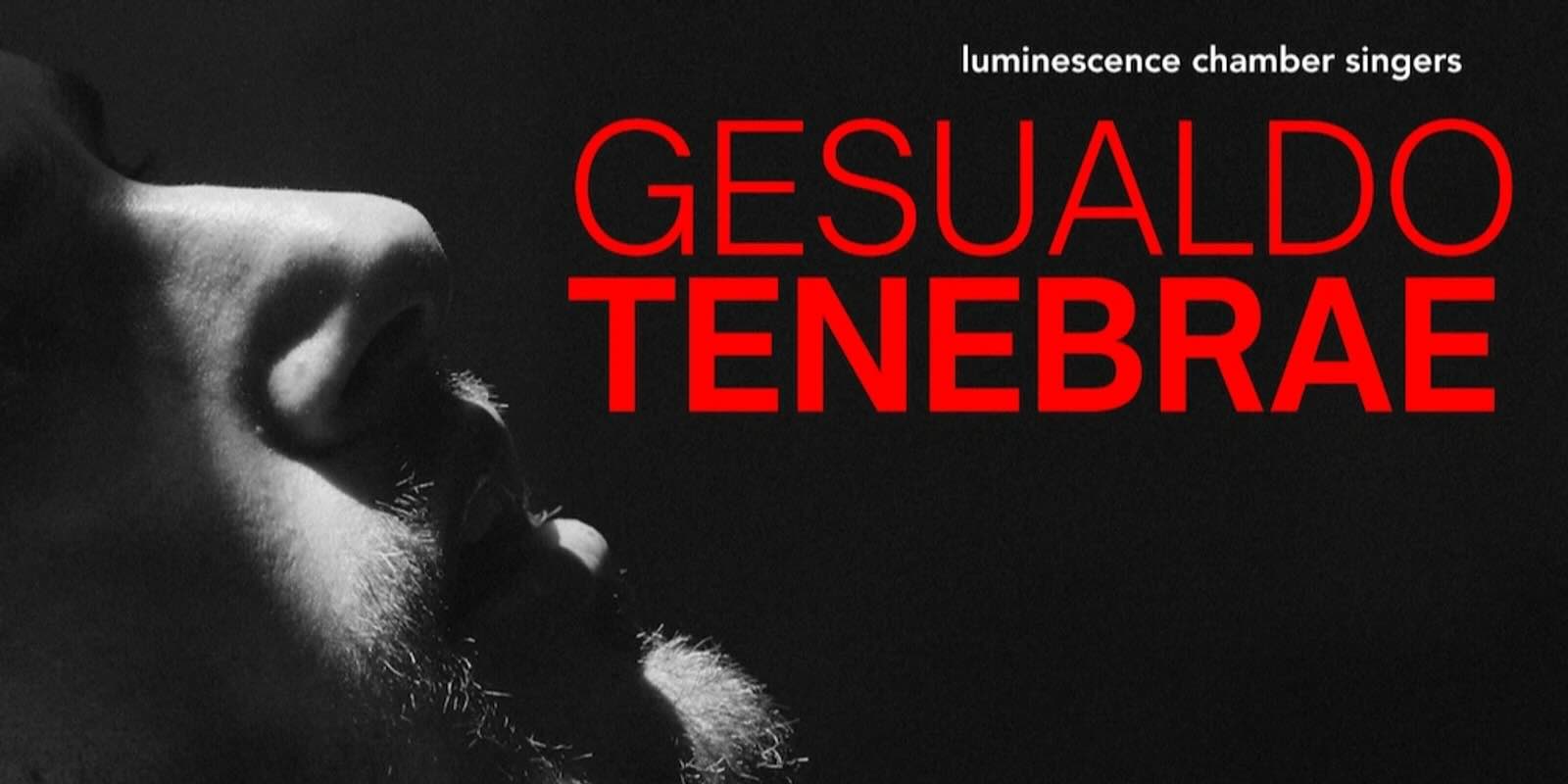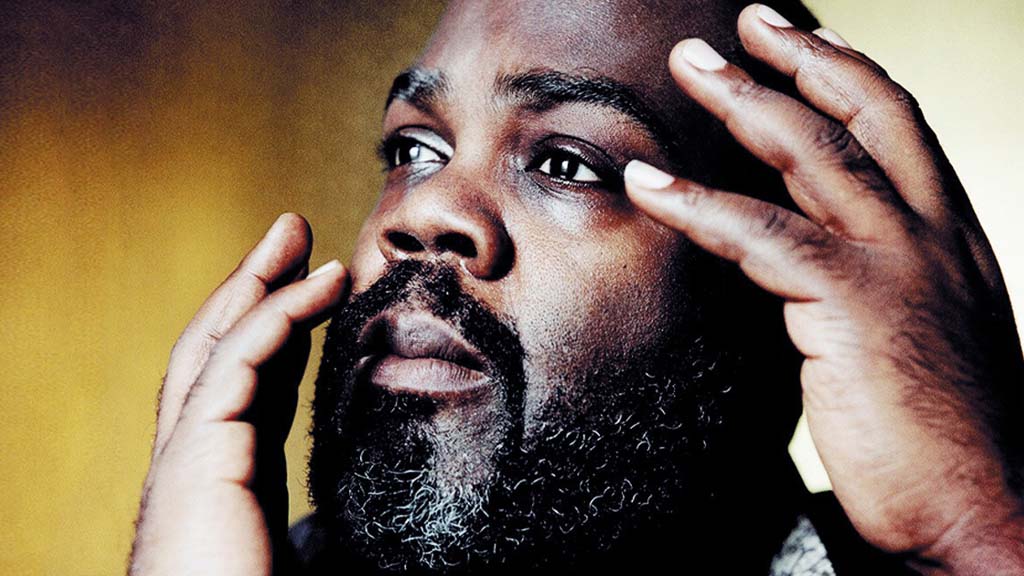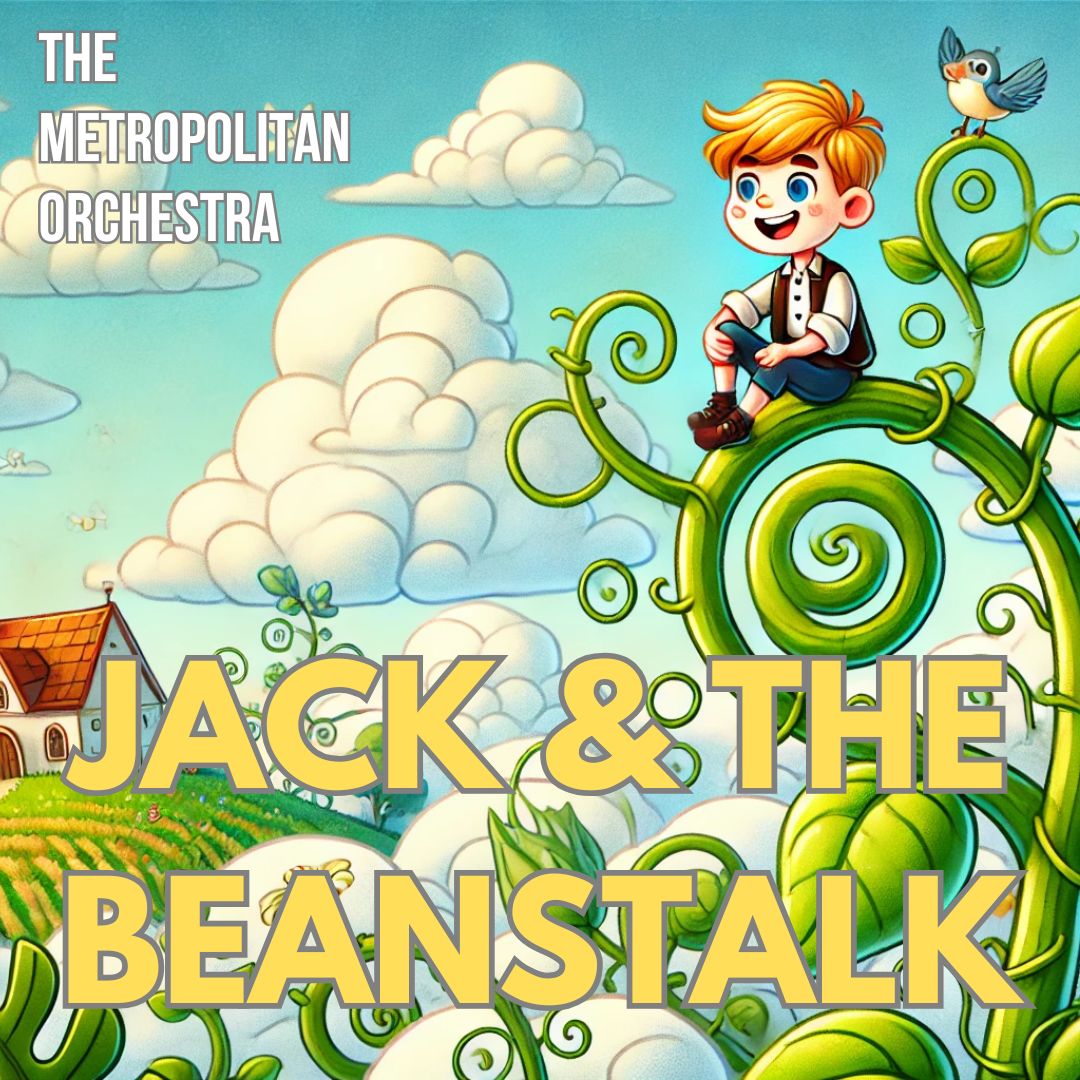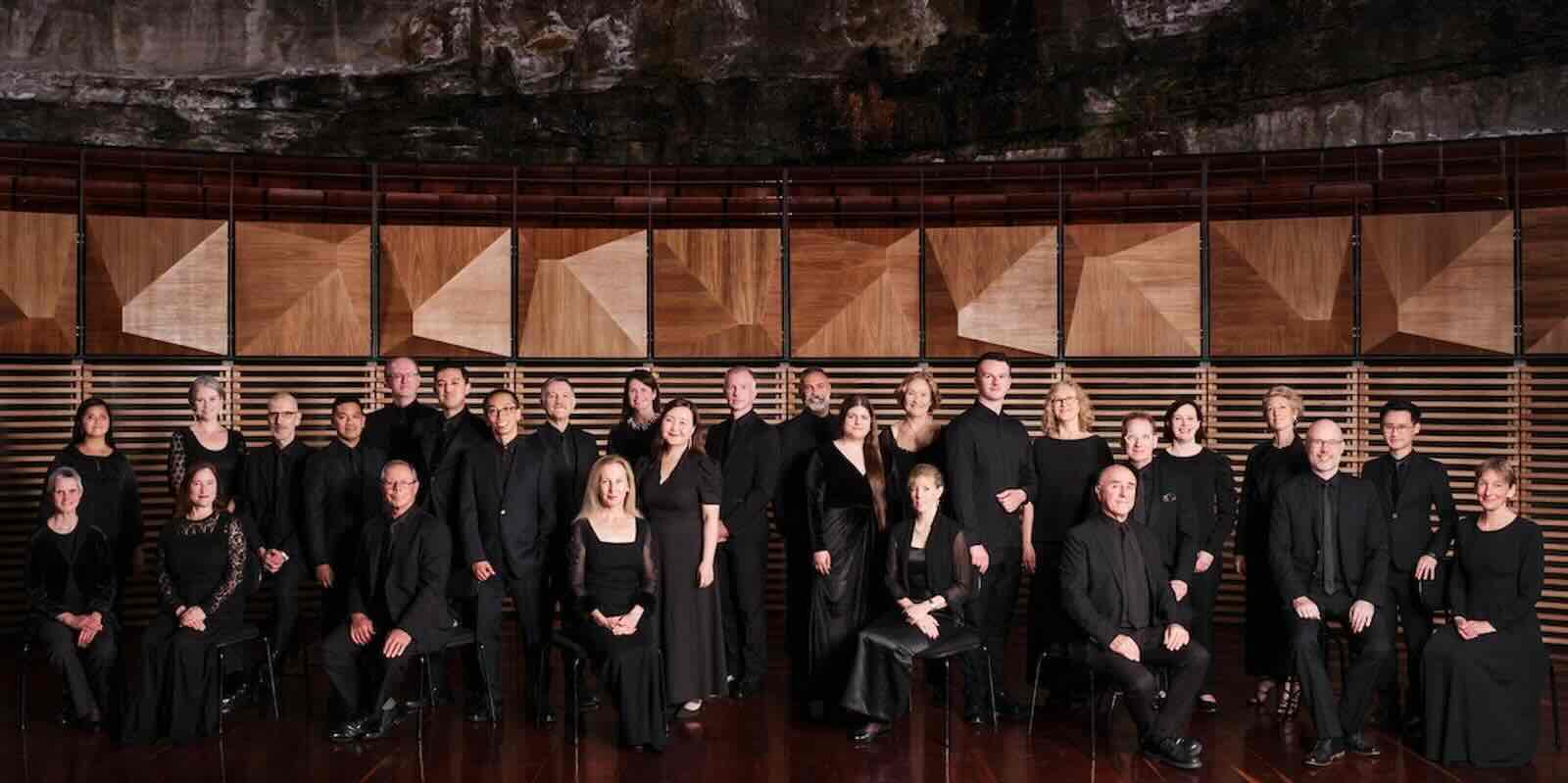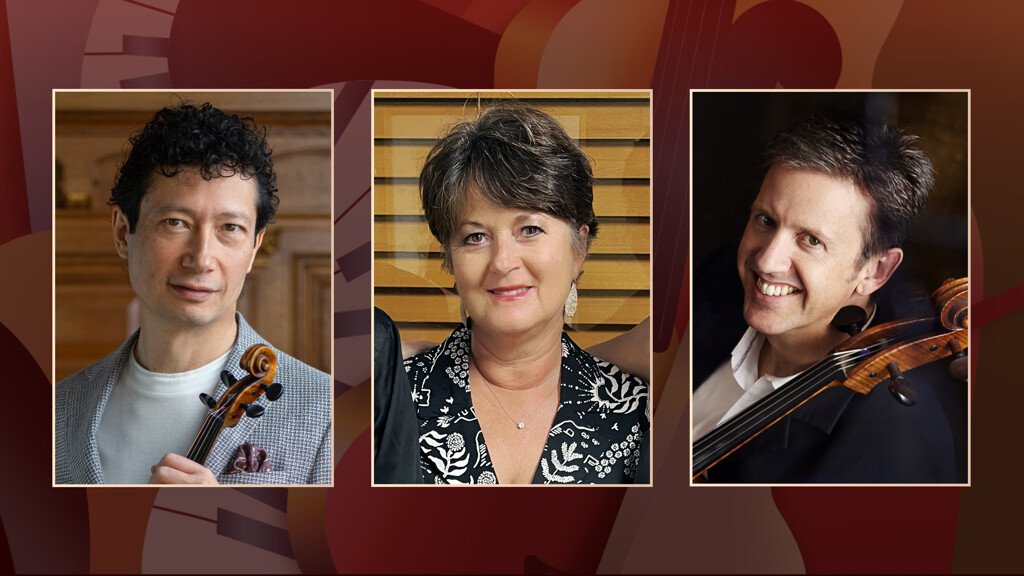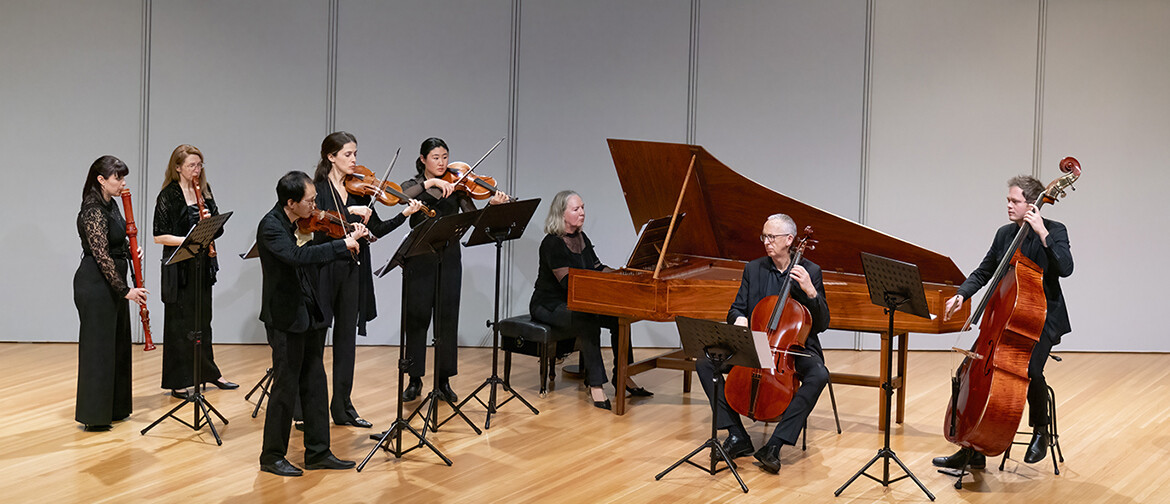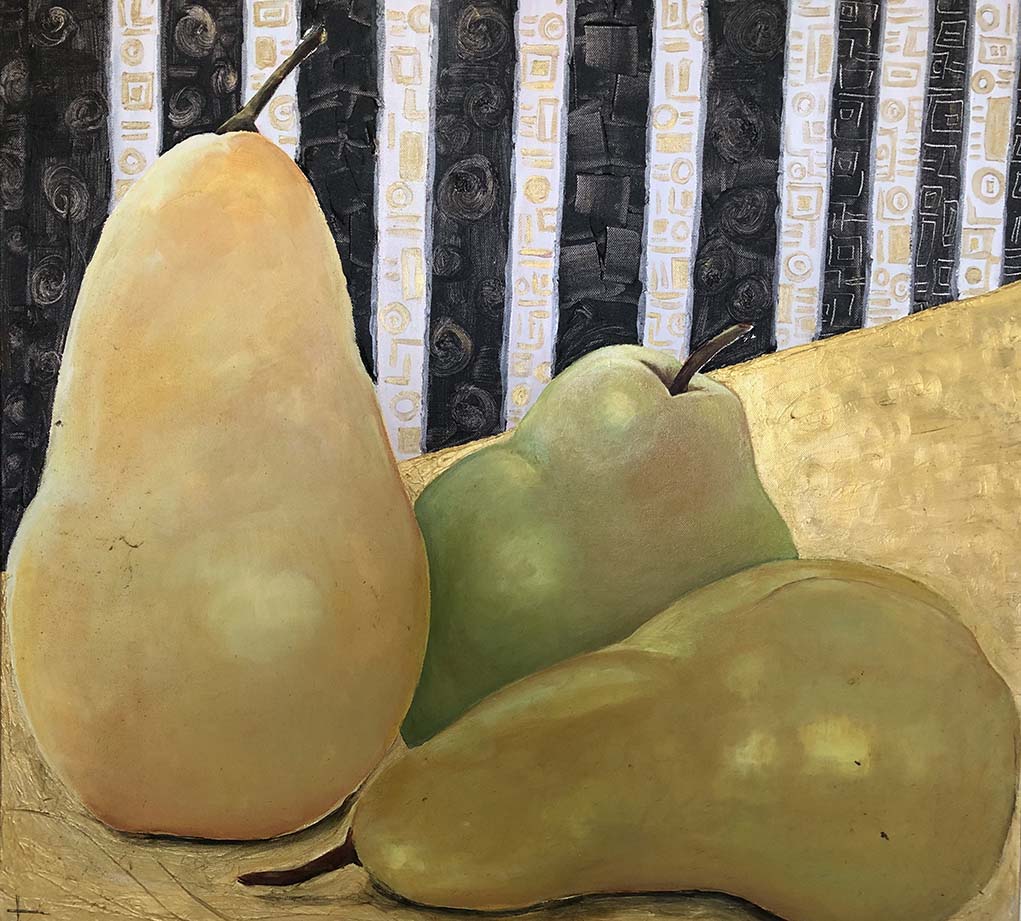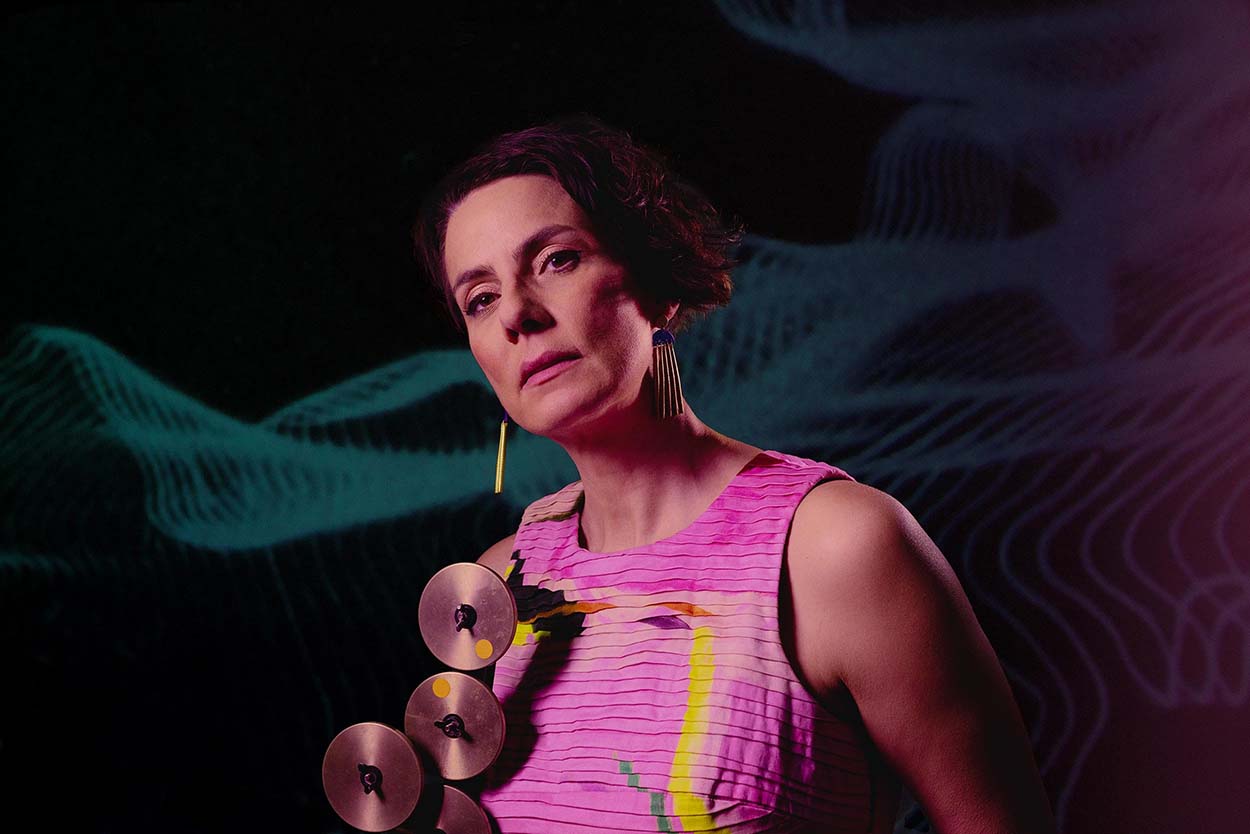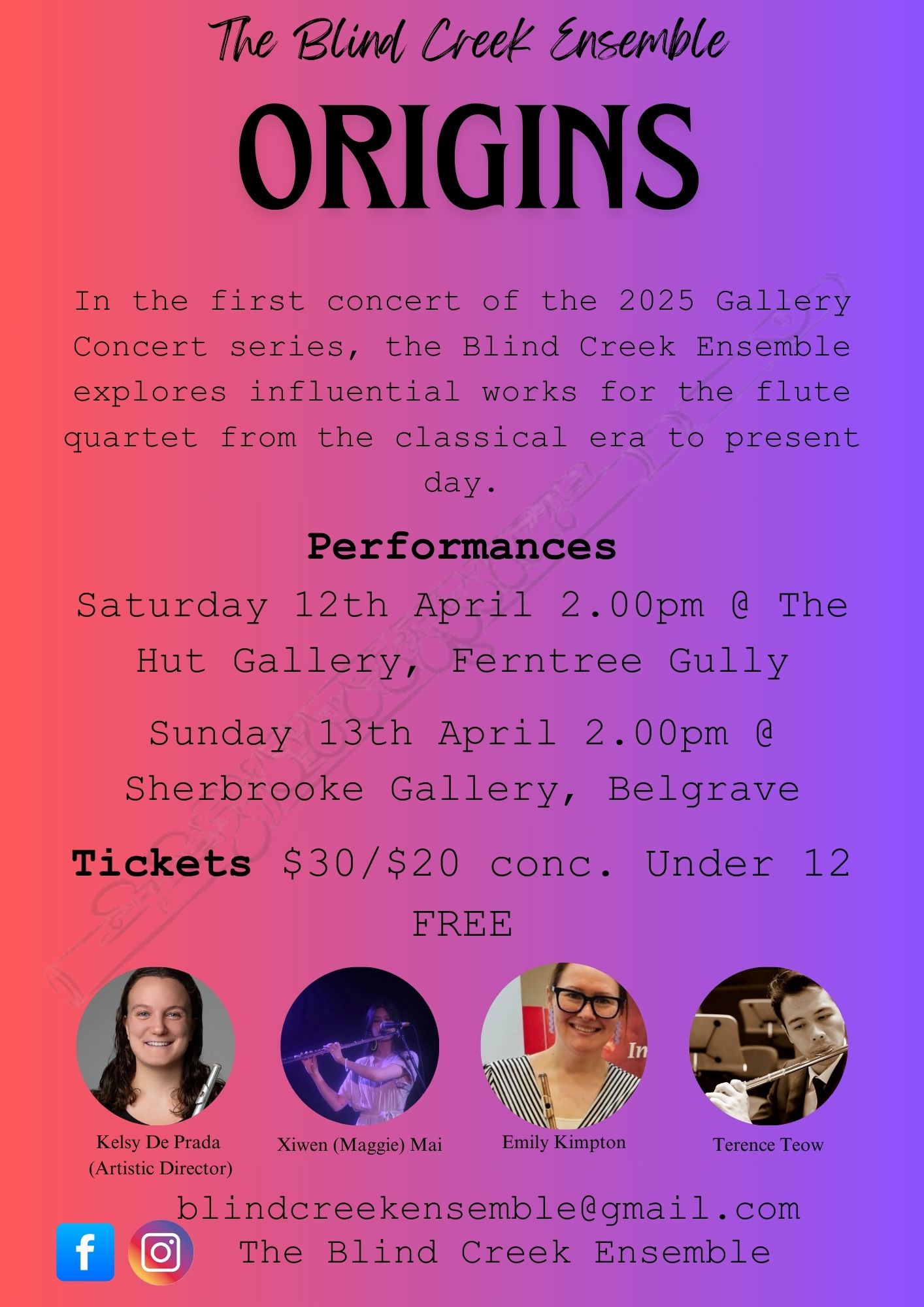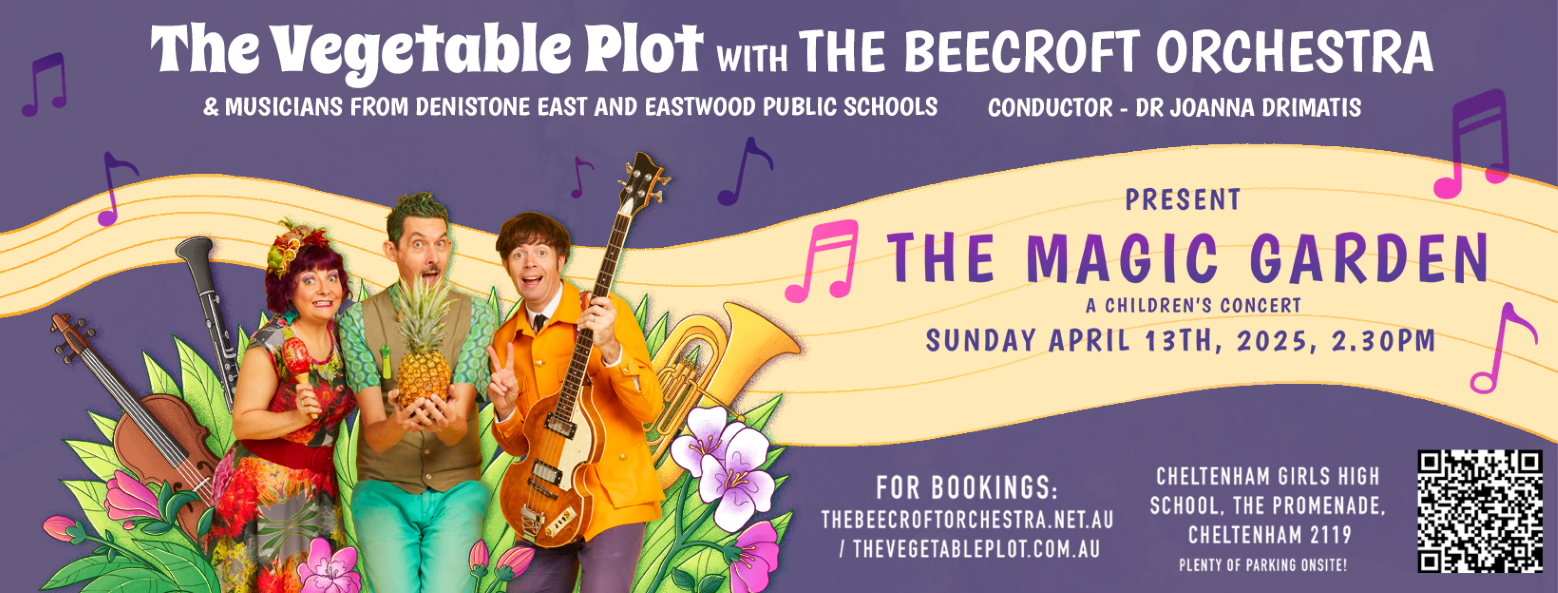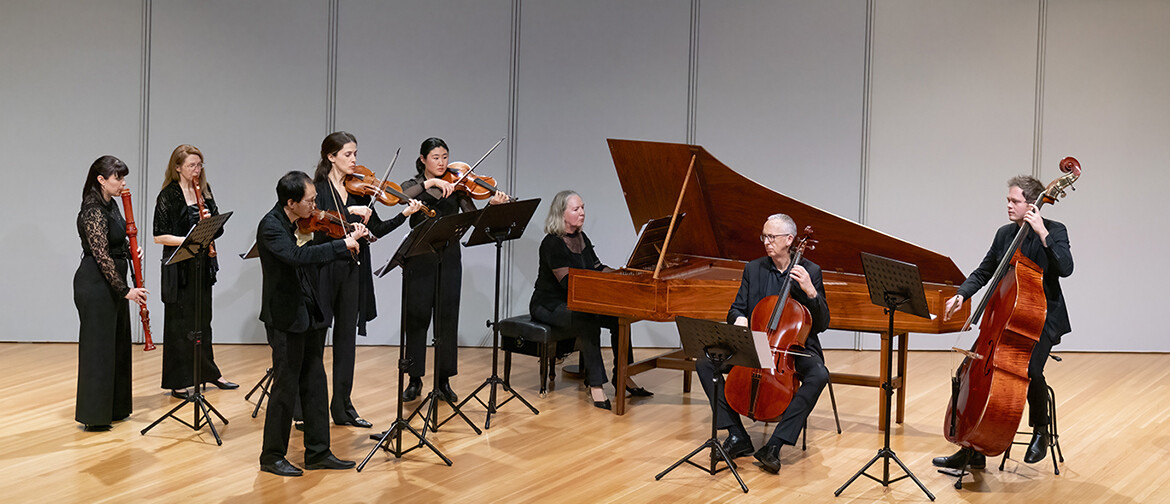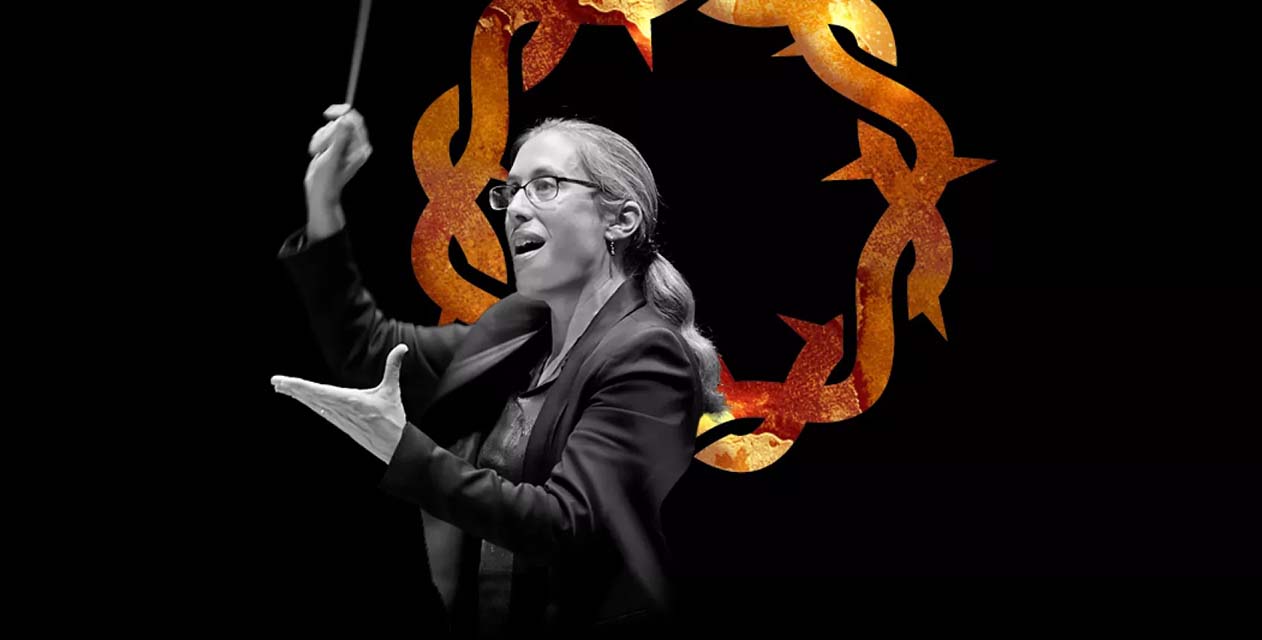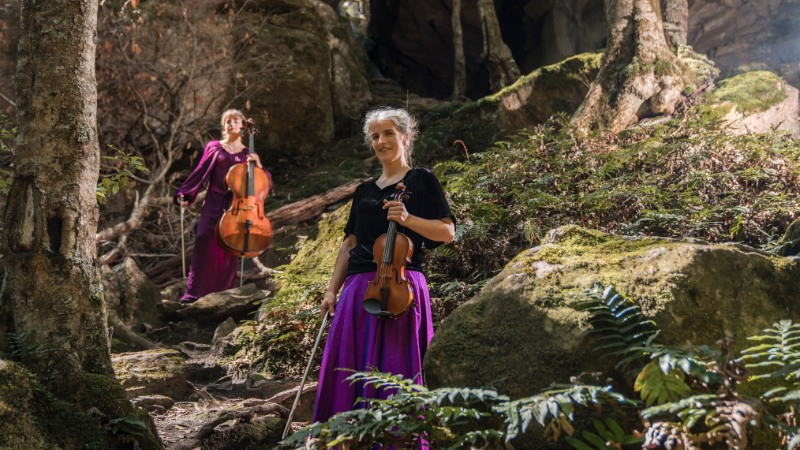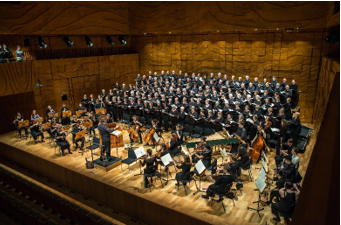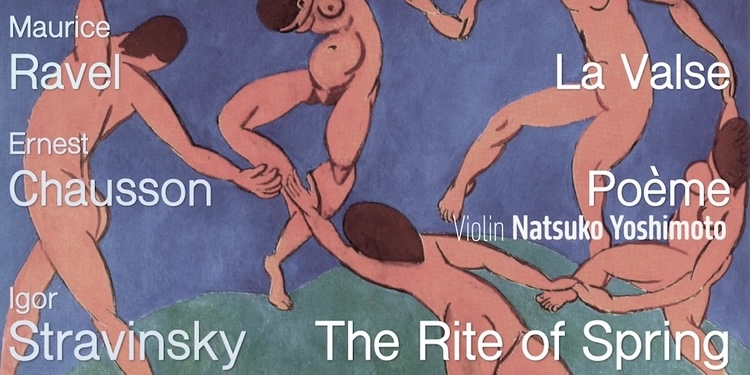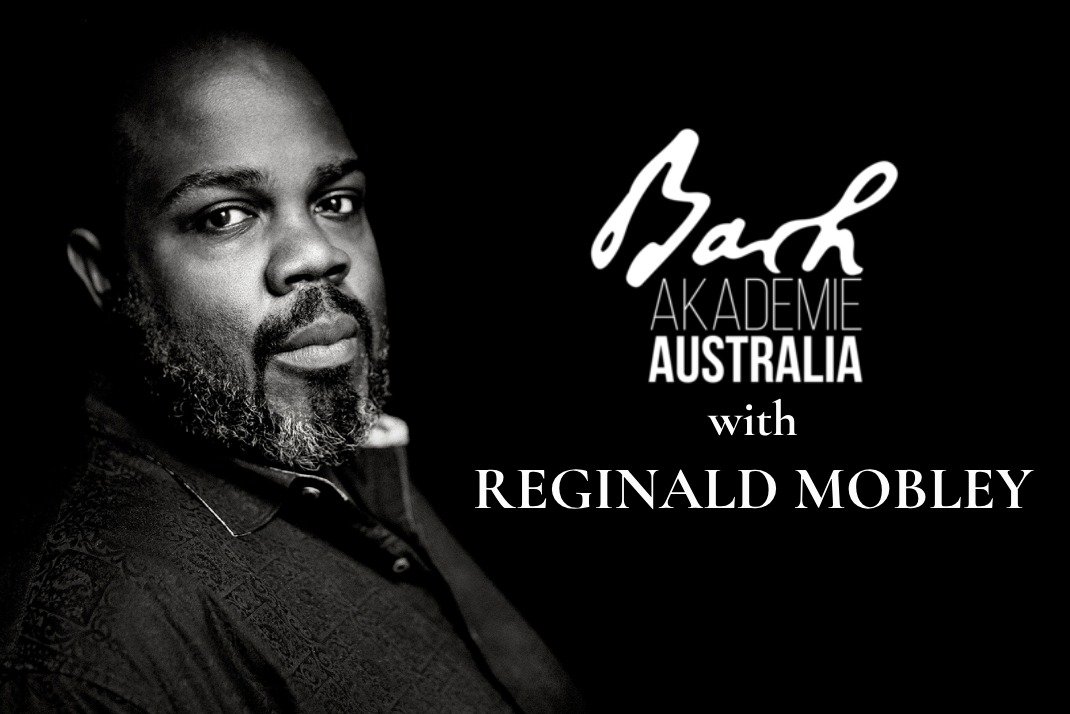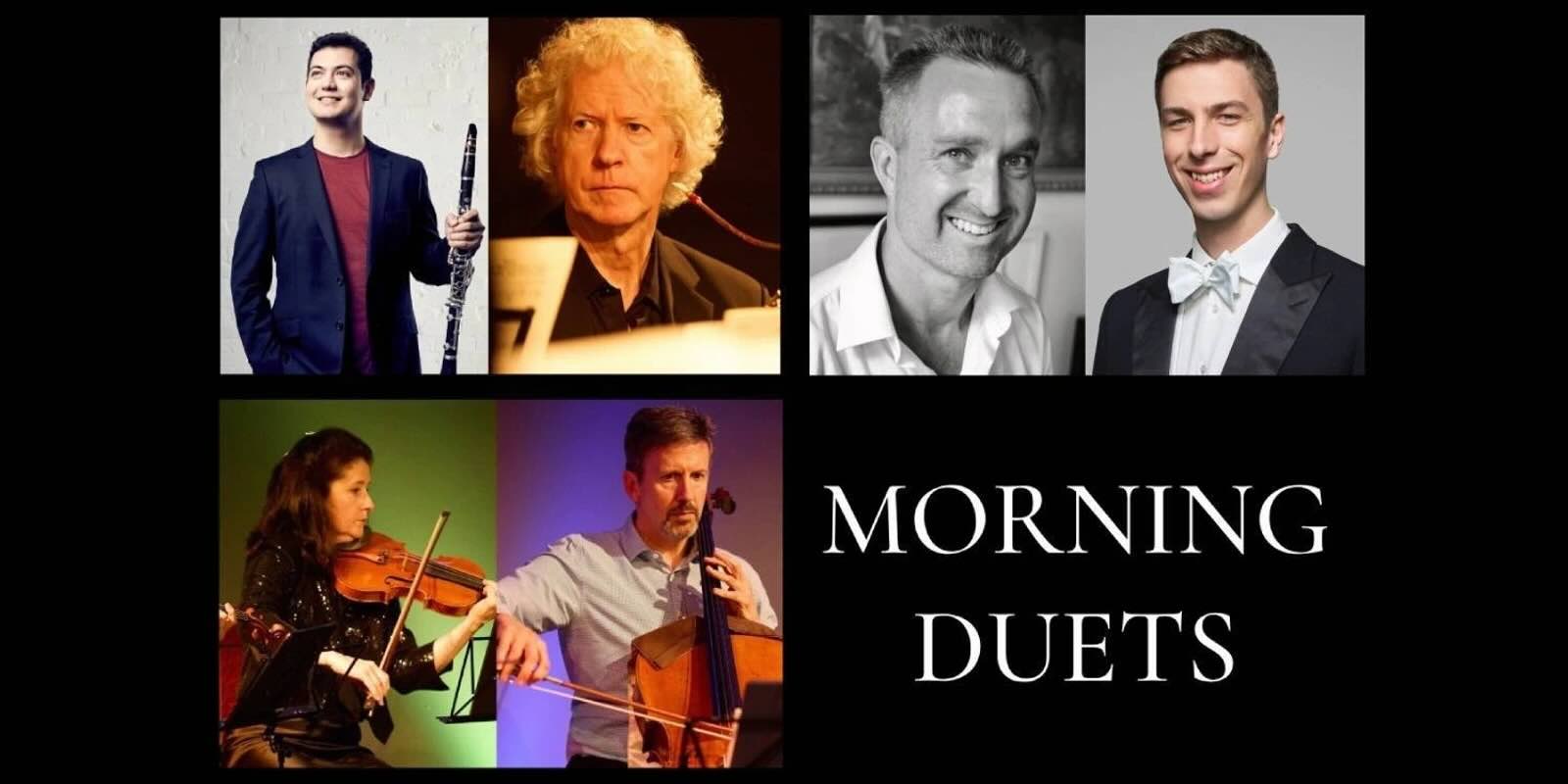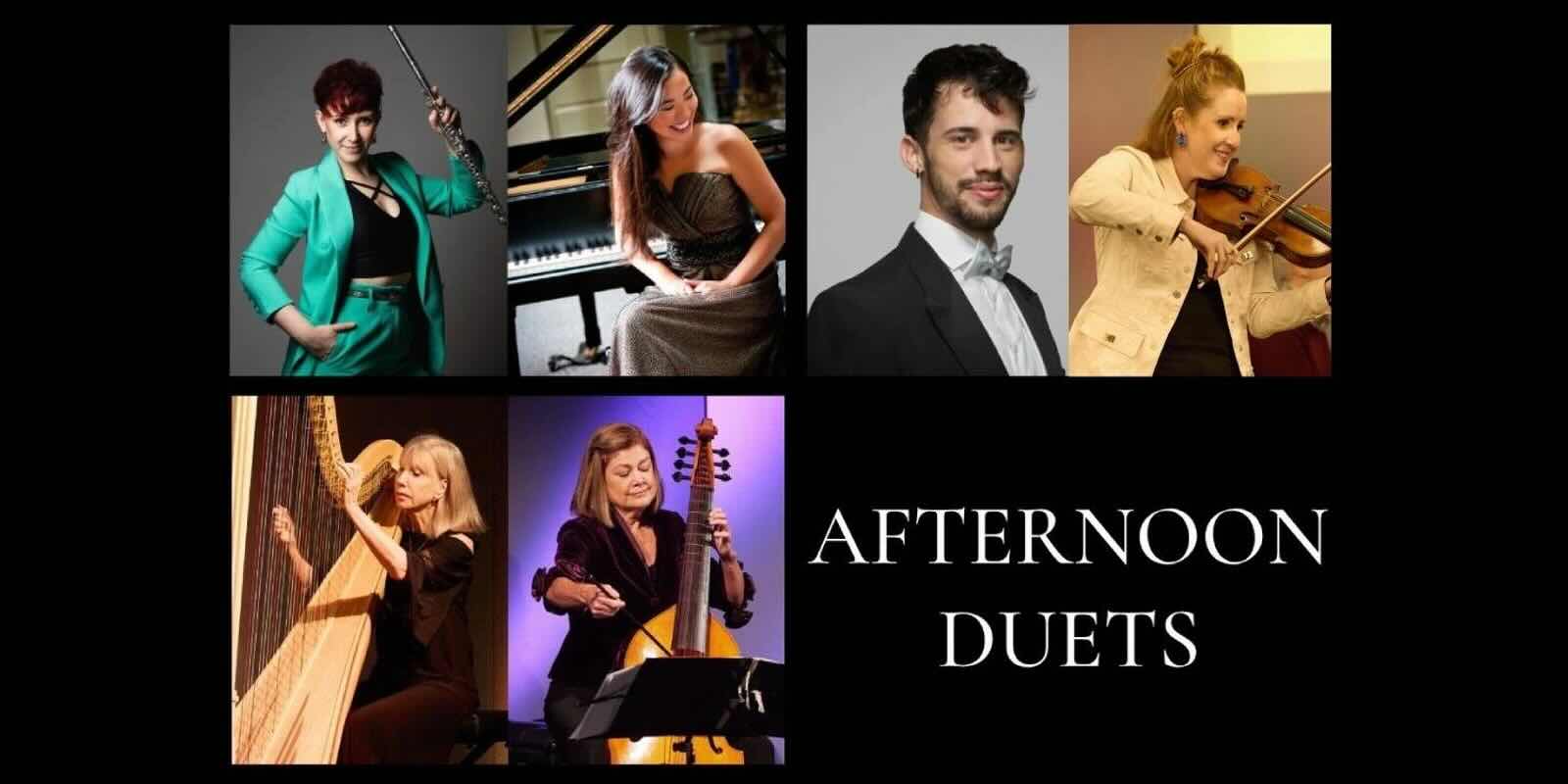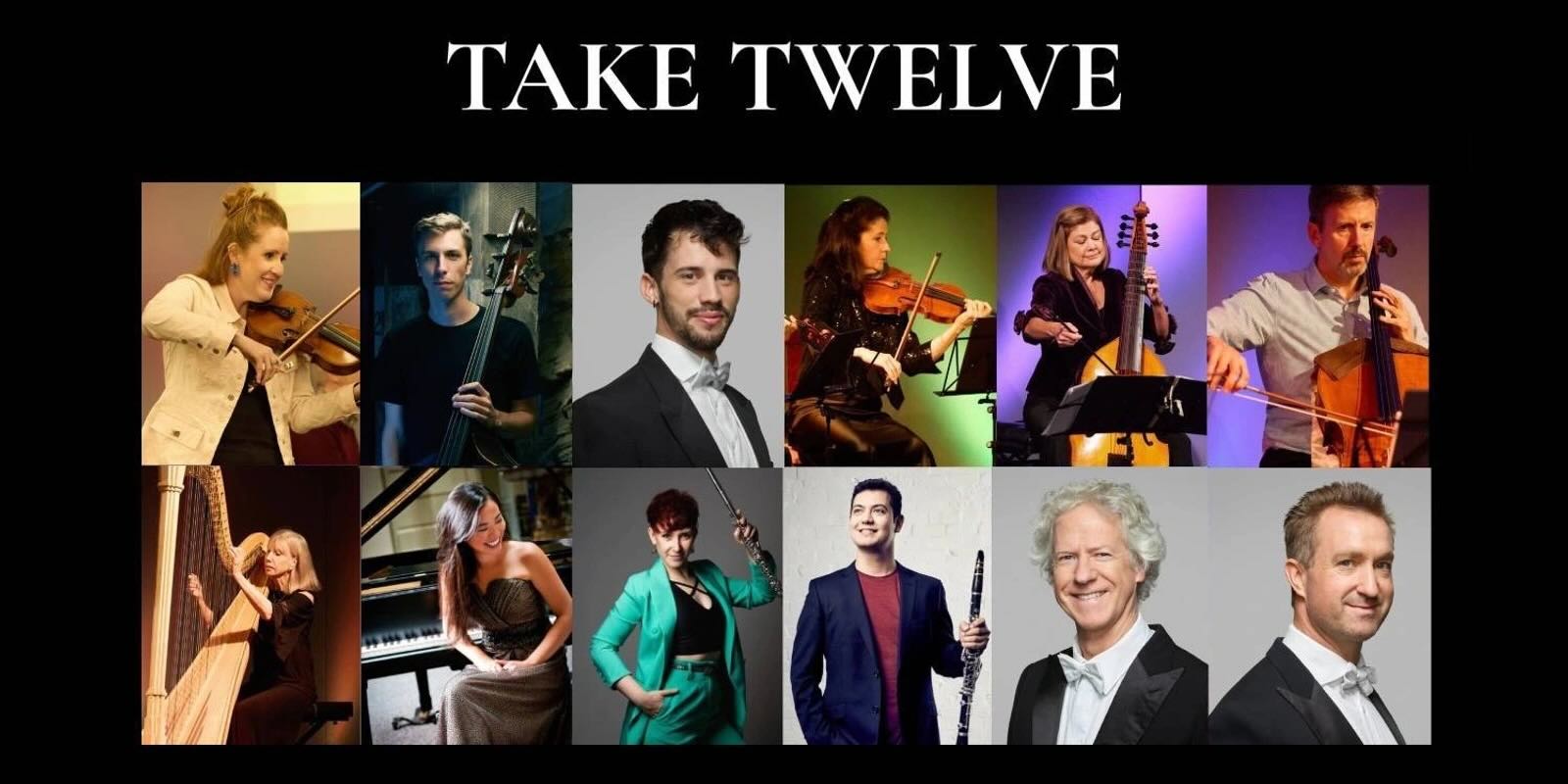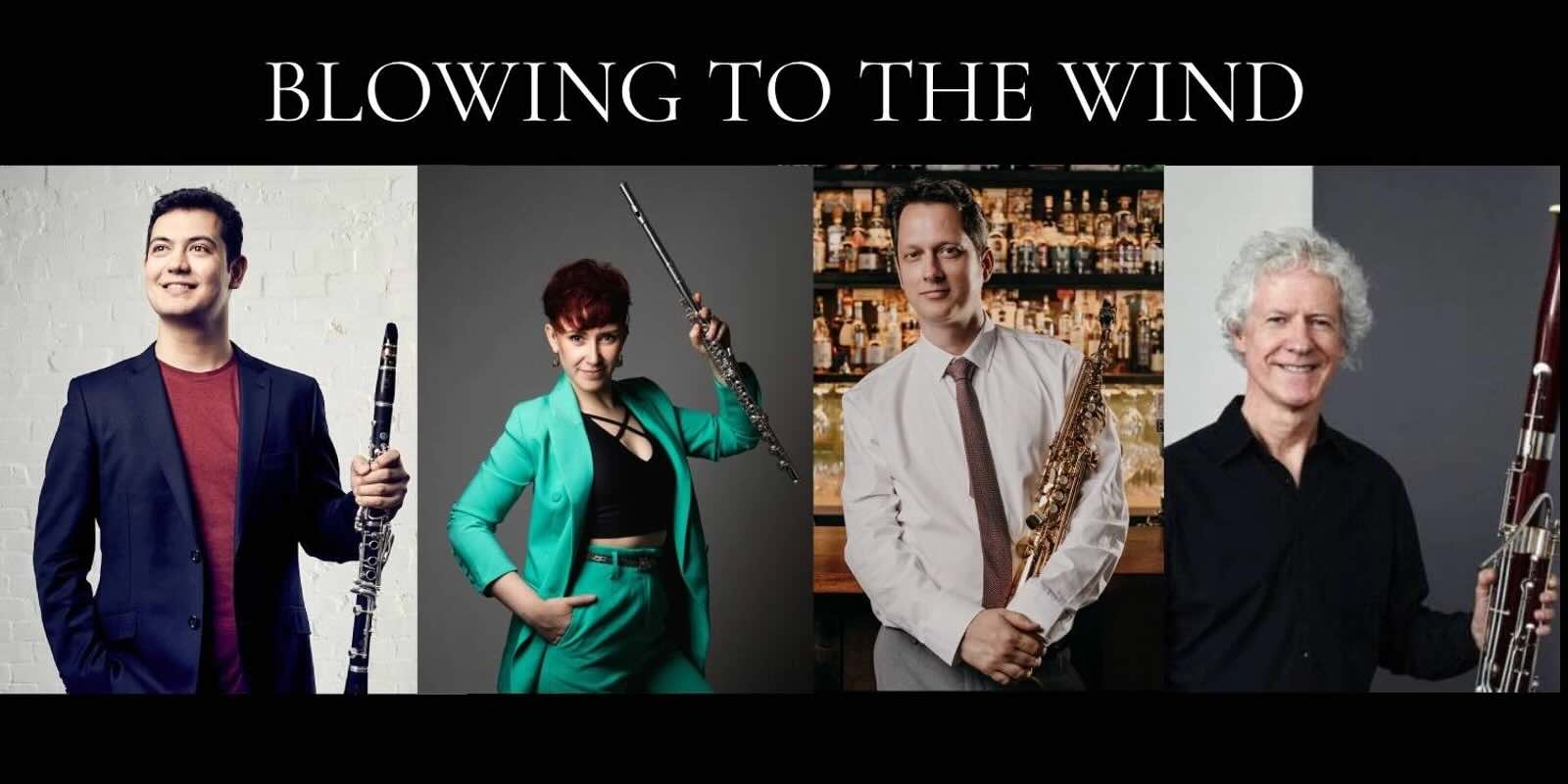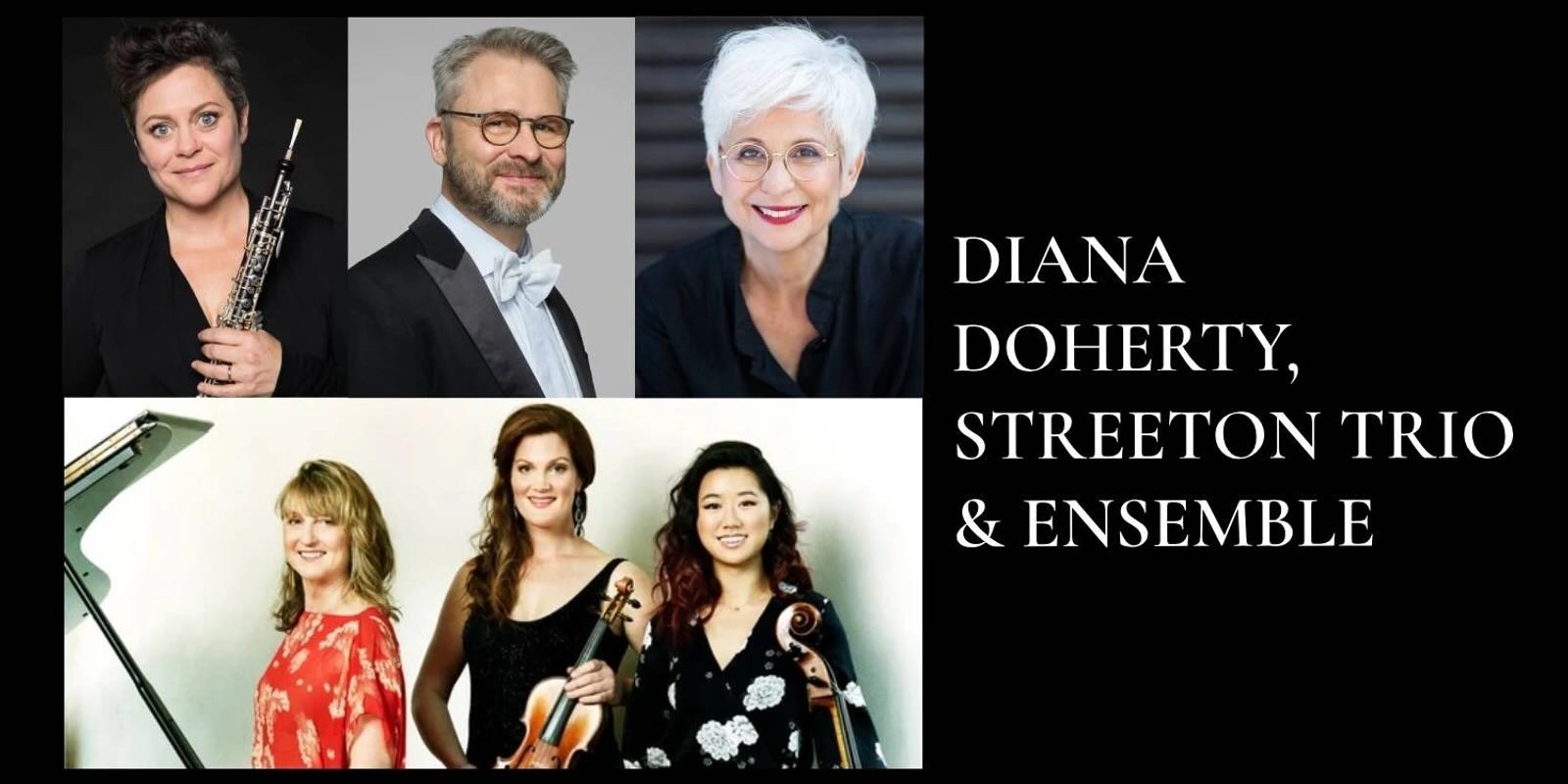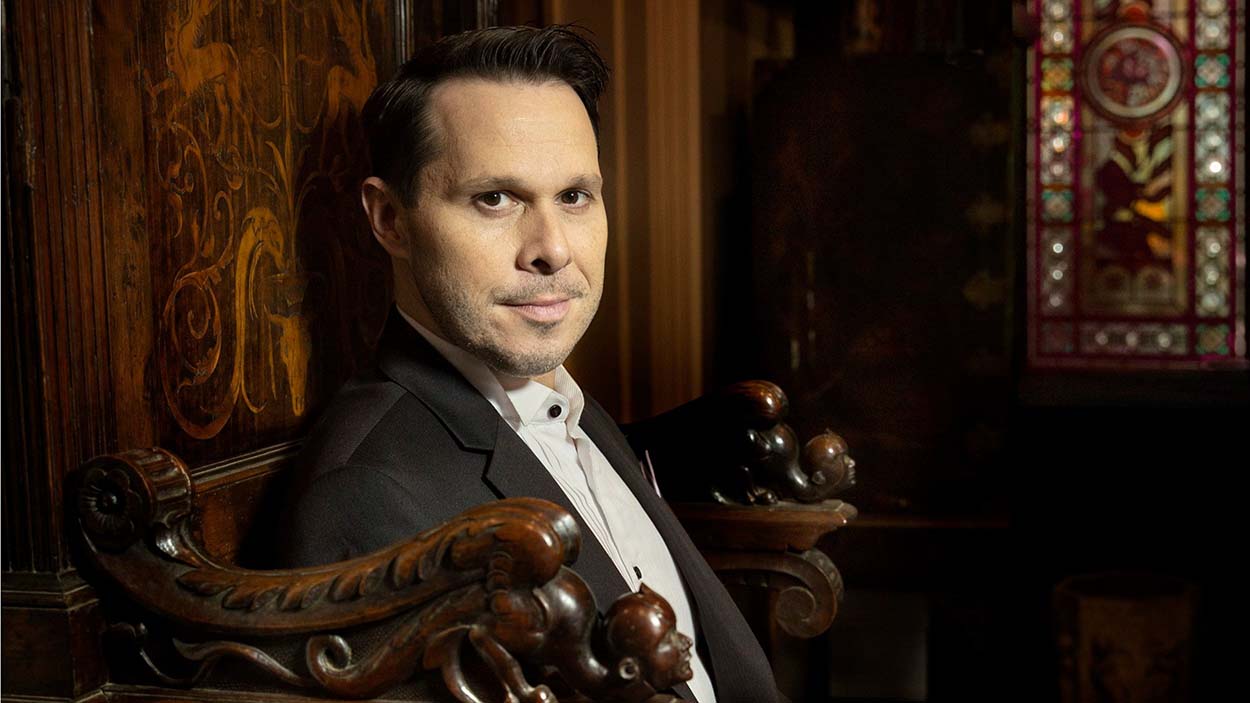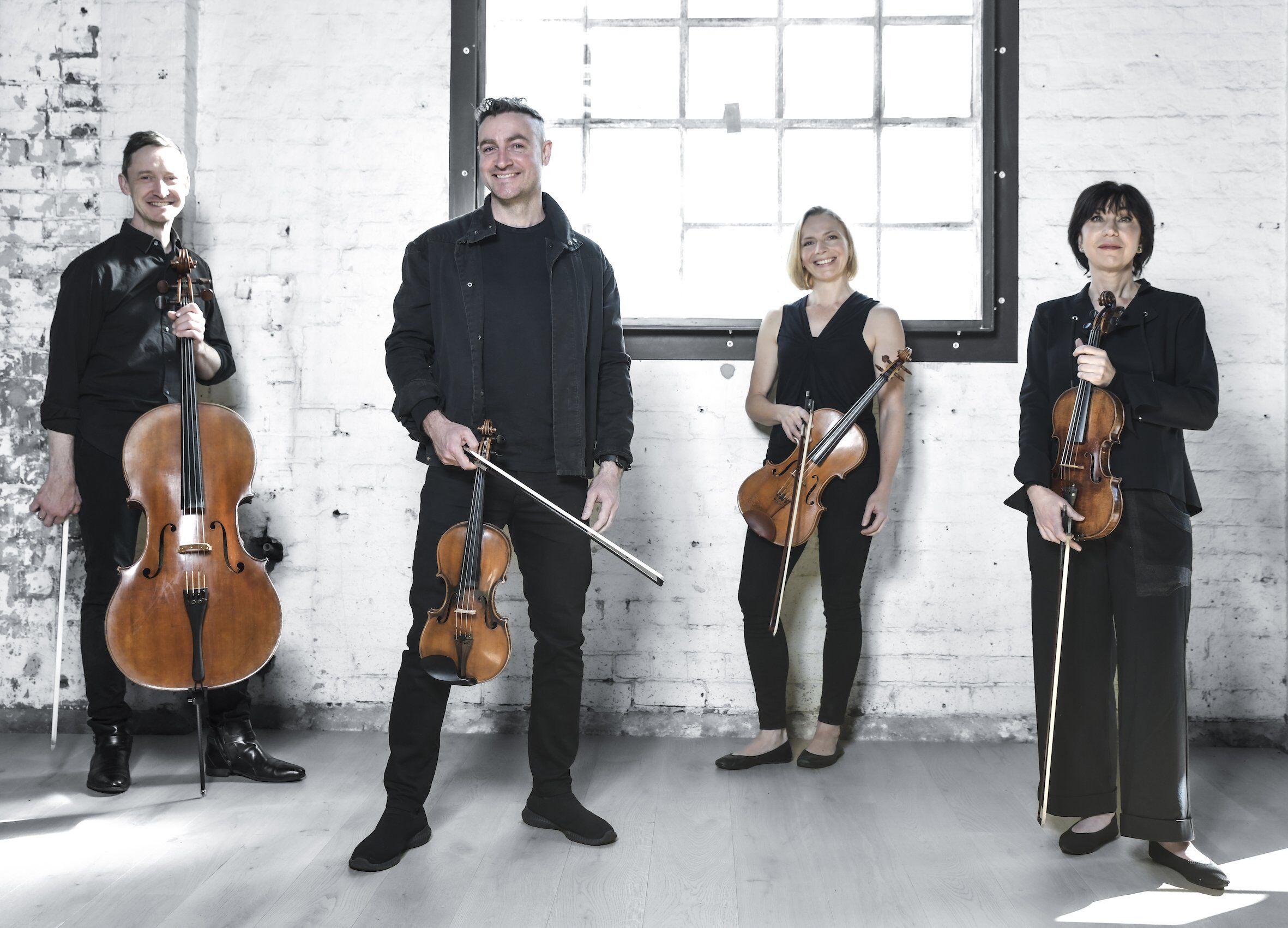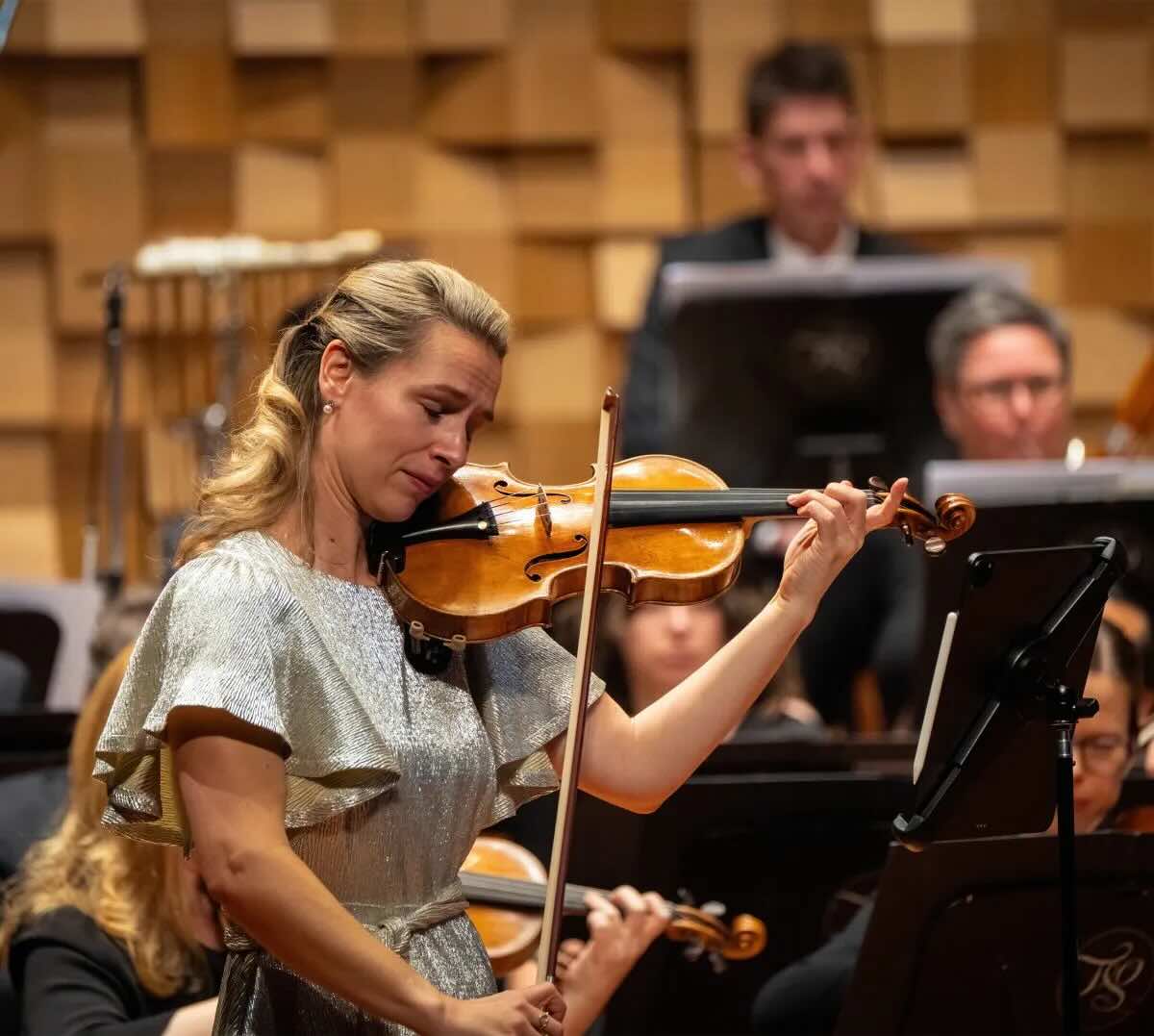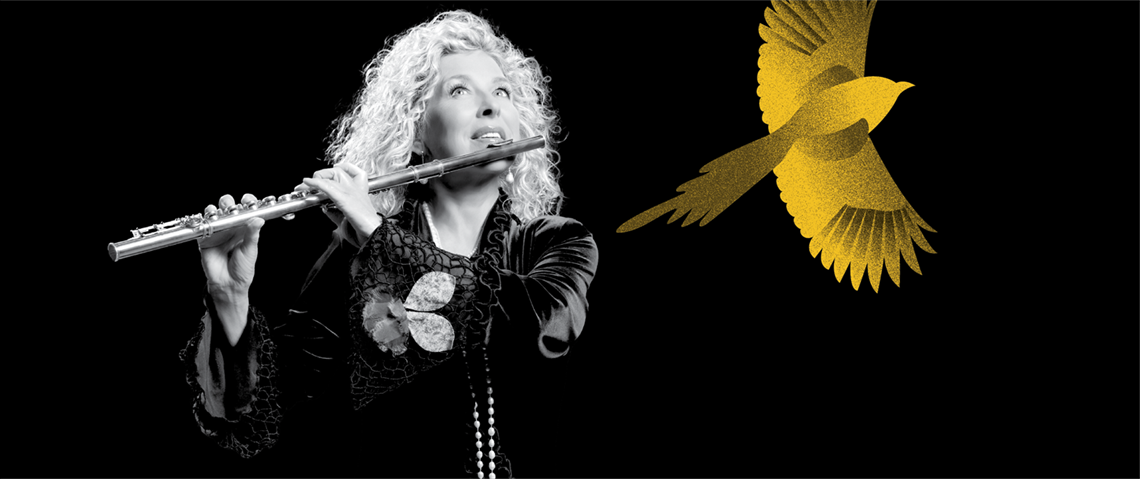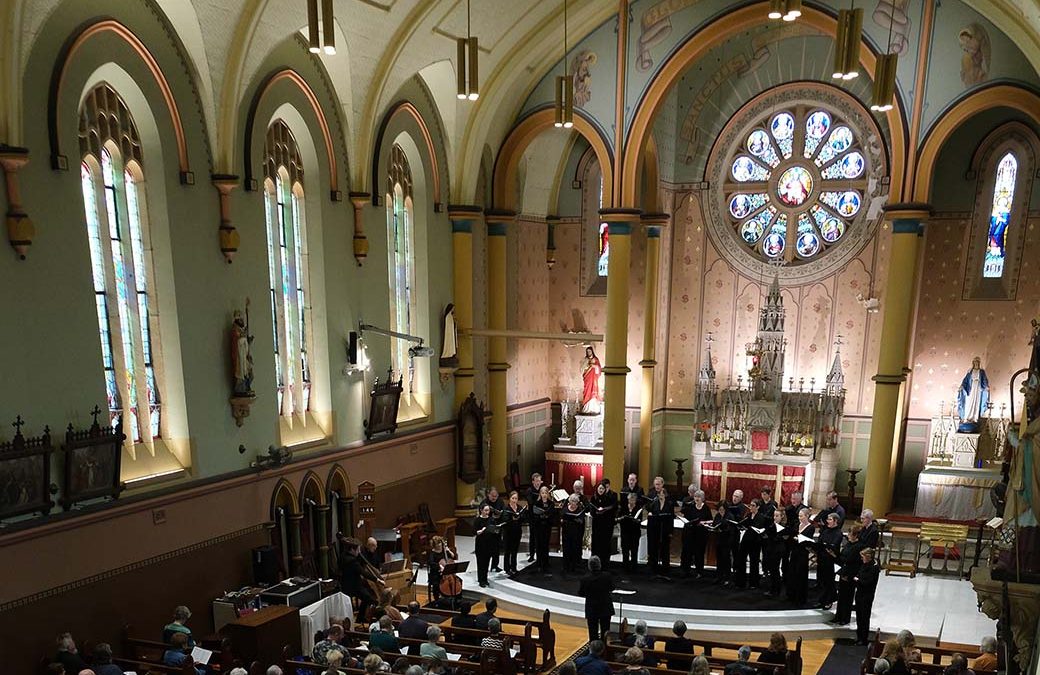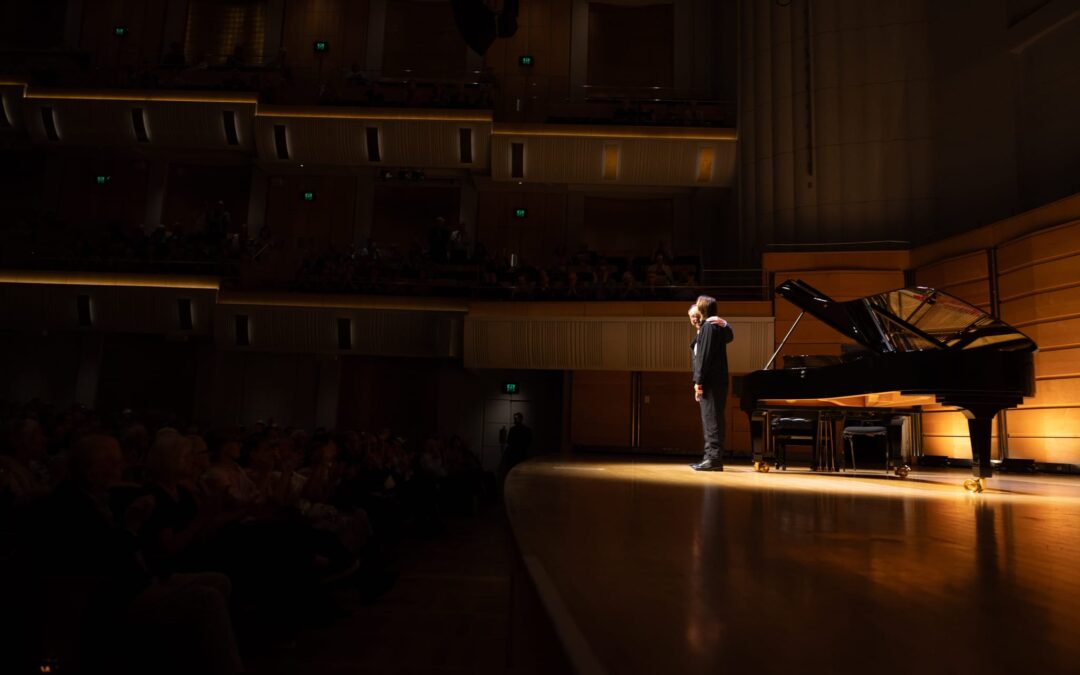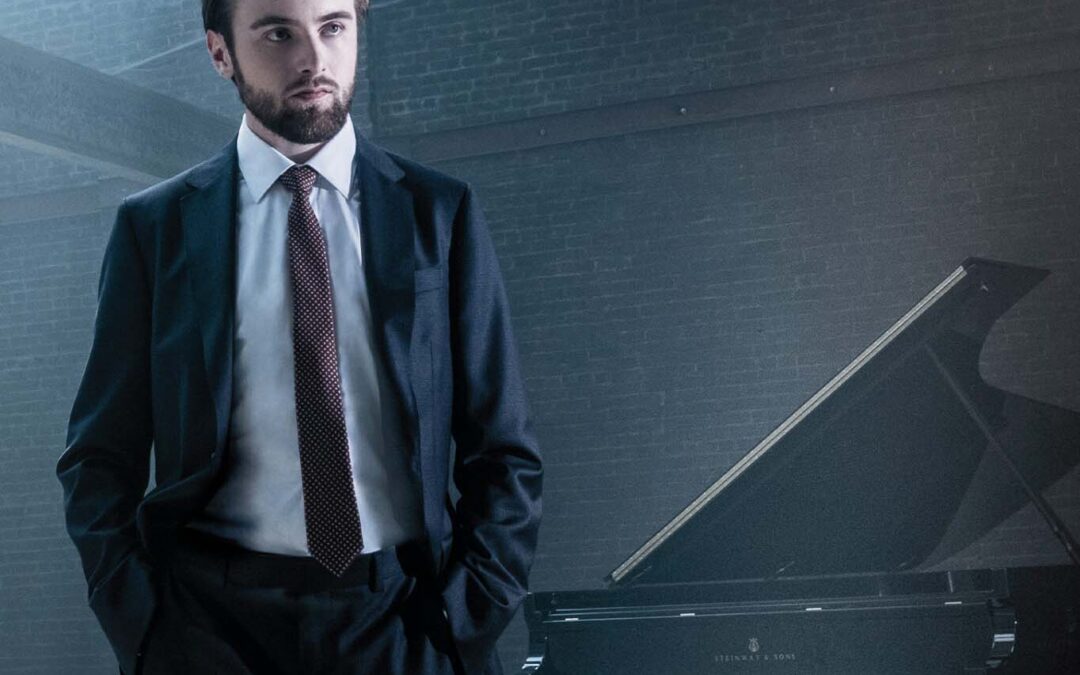It has been about 30 years since I have heard the Australian Youth Orchestra (AYO). The maximum age of orchestra members is 25 years so that is longer than any of the present musicians have been alive! The program was interesting and ambitious so I was intrigued.
I expected a good concert but we got excellent.
The headline piece was Rachmaninov’s Piano Concerto No. 2 with Jan Lisiecki, himself only 24, who has a string of impressive successes and accolades to his name.
The thrills of this performance started right from the slow opening chords and crescendos. In a way, the approach here typified the entire performance: restraint and control.
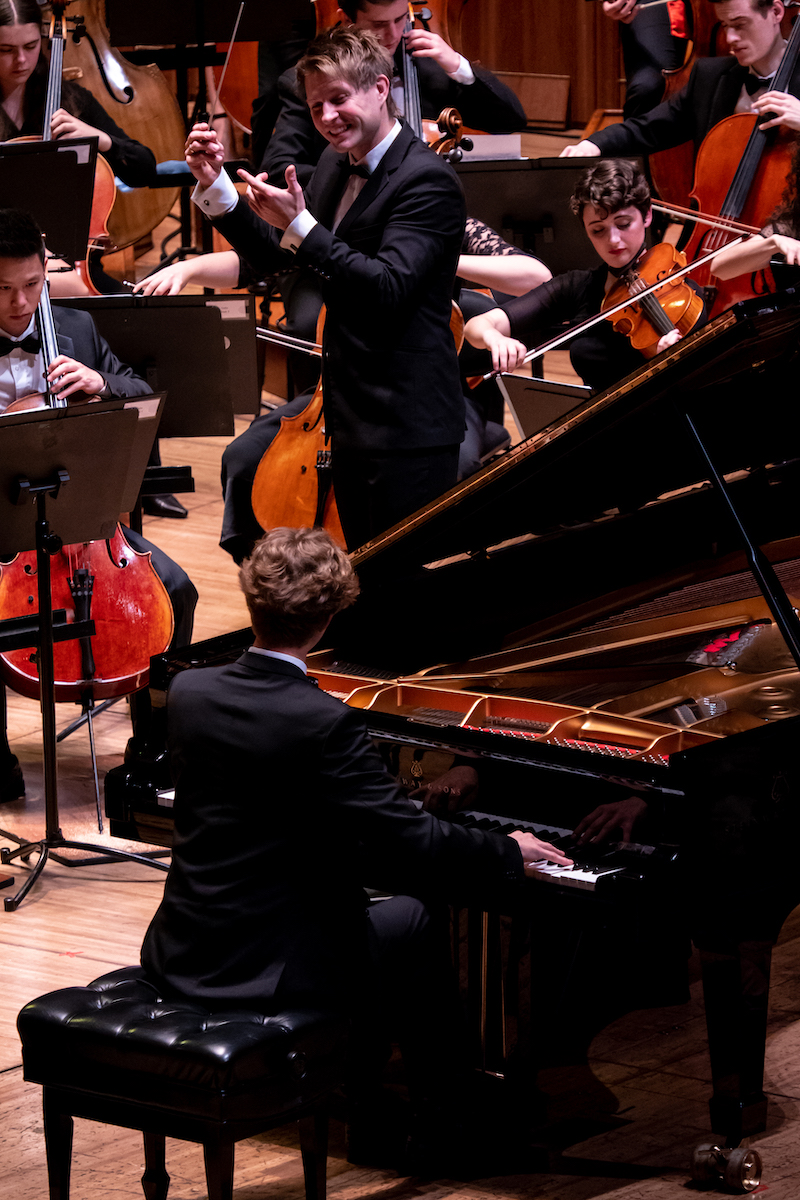
Jan Lisiecki (pianist) and Krzysztof Urbański (conductor) in action
There were many strong tuttis but they were never unbridled. Tempting as it is in climactic moments to let all instruments play as loudly as possible, the brass and percussion would easily overpower the woodwinds and strings. To the credit of the players and the conductor Krzysztof Urbański, this tonal balance was never compromised. Instruments only arose out of the texture when the score demanded it. Urbański’s conducting style was constrained; there was no jumping around the podium here, and this discipline was clearly embodied by the players. Few orchestras achieve this level of unity.
Often in this concerto, the orchestra provides a kind of stable bedrock and the piano takes that material and makes it flexible, pulling the melodies, harmonies and dynamics in all directions. Lisiecki’s piano was not in contrast to the orchestra, but his playing appeared to emerge from the orchestral texture. A case in point is the arpeggios in the piano at the beginning of the second movement. It would be tempting to take a virtuosic approach here, but he just treats it as an accompaniment until gradually melodic fragments begin to bubble up out of the texture. It is rare to see a soloist use an ensemble approach and then to such great effect. He played as if he had nothing to prove. Restraint and control…
Actually, the concert opened with a piece by the young Australian composer Holly Harrison: Frumious. Harrison has written many works inspired by the fantastical writings of Lewis Carroll. “Frumious” is a nonsense word, a cross between “furious” and “fuming”. Humour was ever at the forefront of this piece and, like the juxtapositions of dream images in the Alice books, the unifying feature was chaotic contrasts, with wild fluctuations in meter, tempo and articulation. An Alice-like piccolo solo was only found towards the end of the piece. This implies the chaos existed long before Alice arrived. A lot of fun.
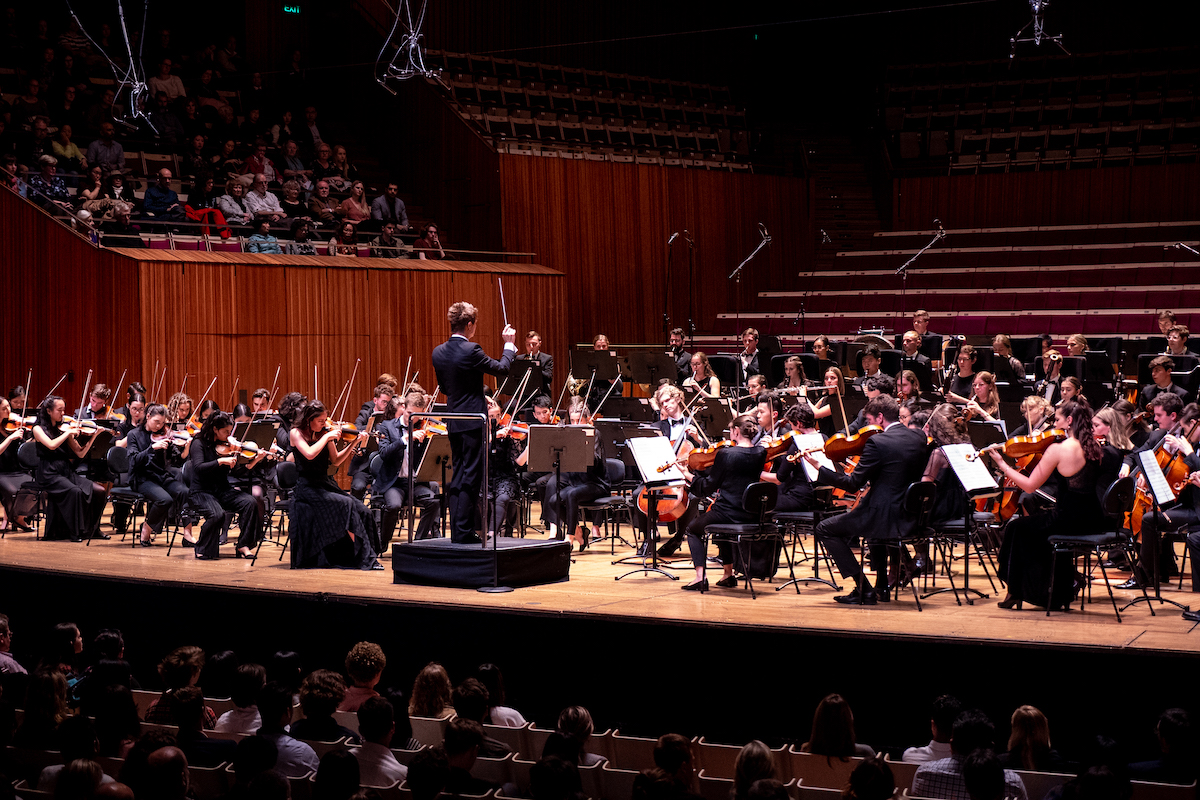
Shostakovich’s 10th Symphony in E minor was written in 1953, just after Stalin’s death. Stalin often publicly berated Shostakovich and so he walked a tight-rope most of his life. There is a sense of sadness, frustration and relief in this symphony.
Unlike the Rachmaninov performance, there were many unbridled moments here. The furious machine-like second movement was inescapably overpowering.
There were also moments of great beauty, like the horn solo representing a musical spelling of Elmira, Shostakovich’s muse. Shostakovich’s own motive DSCH (D, E flat, C, B) permeates the last movement with strong insistence. As if he could finally be himself and assert his true nature now Stalin was dead.
This rendition of the 10th was the best I have heard. Again, there was total musical commitment from the orchestra. The word that best describes this performance is Energy.
A few things I should mention in general about the orchestra. Firstly, the viola section was large, twelve players, the same as the first and second violins. They were also placed at the front of the stage to the right of the conductor, where the cellos are usually found. The effect of this was revelatory. You could actually hear the violas as they filled out the middle pitch range, enhancing the string sound to a rich texture overall. When the viola parts were featured in the score the effect was full and warm.
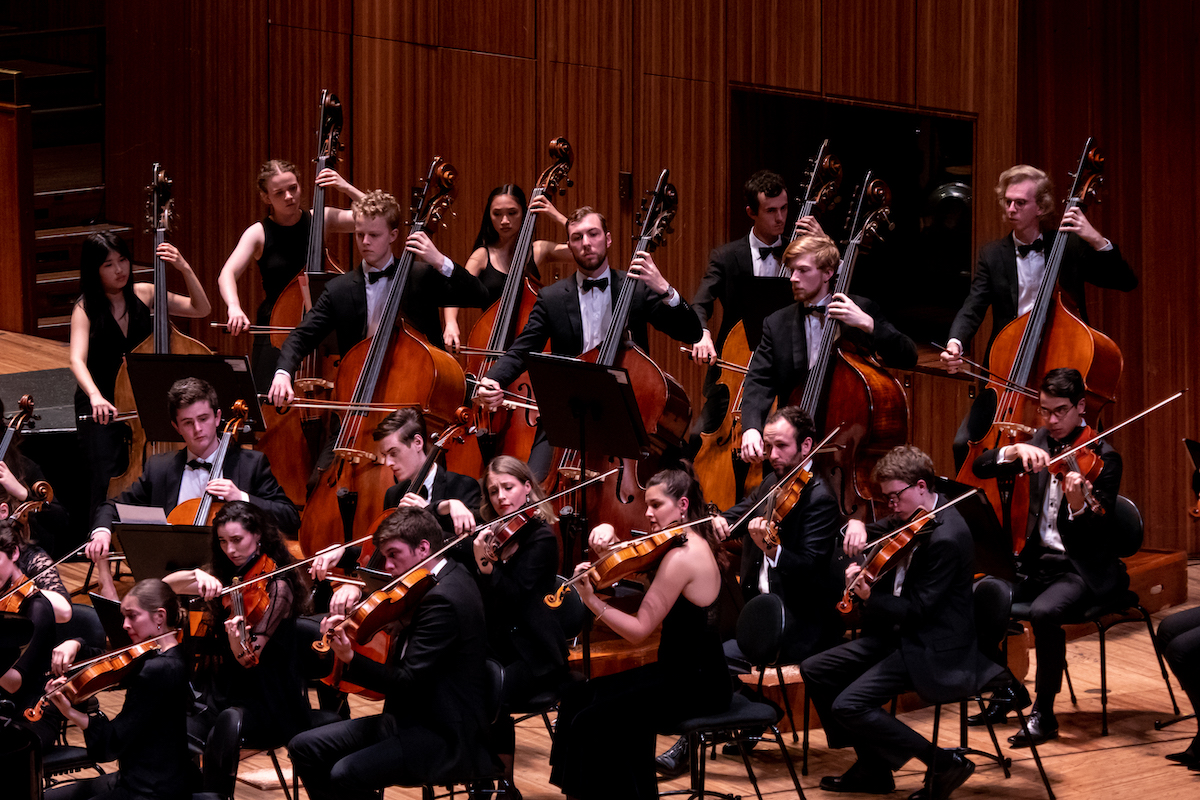
The viola and double bass sections
Another feature which gave this orchestra a distinctive voice was the sotto voce playing of the violins. I have never heard such a unified gentle sound and yet be almost not there at all.
Sometimes when the music swelled and ebbed the whole string section would move as one, like underwater plants in a surging ocean, forming a kind of collective persona. The performance exuded a humility; as if the music was all important and egos had no place. This is not really what one would expect of a “youth” orchestra. I salute the exceptional musicianship of the players, who all listened to each other like fury, and to the exceptional leadership of the conductor.
It was a privilege to be at this performance.
Thoughts about:
![]()
Australian Youth Orchestra with Jan Lisiecki | Sydney | Mon 5 August, 2019
![]()




